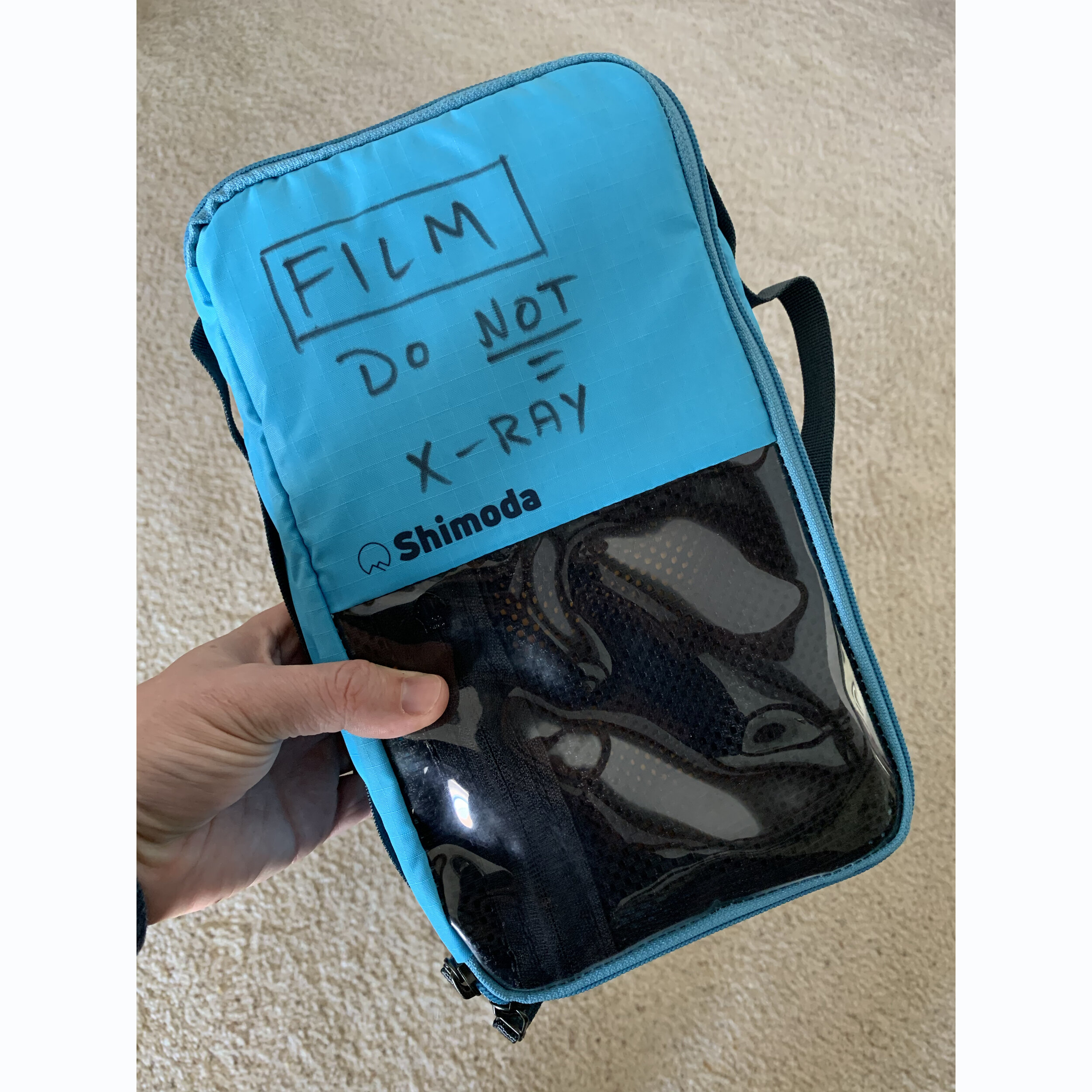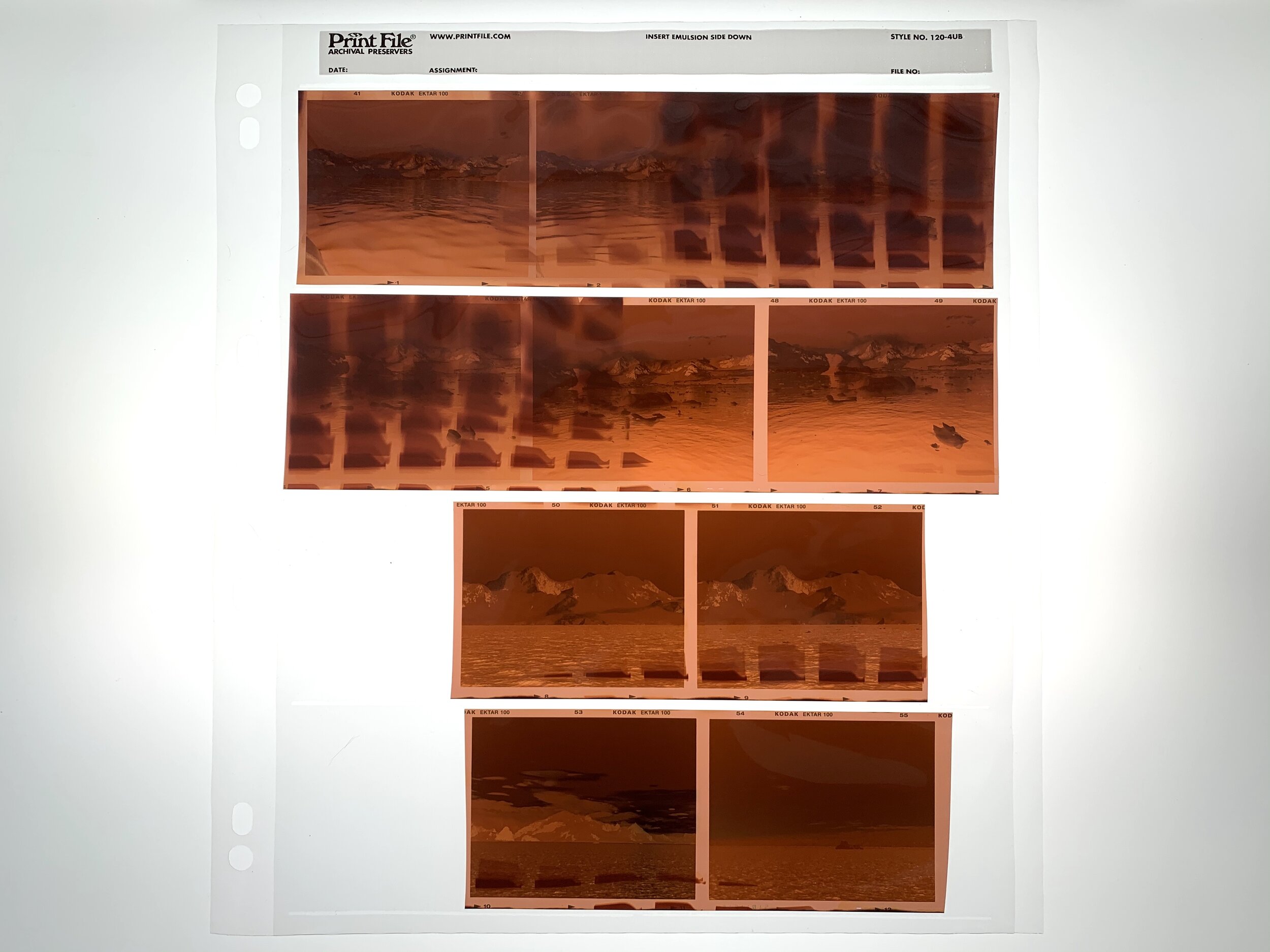So, What’s all the Hubbub?
The big news in the film world lately is the TSA in the United States have initiated a project to install high powered CT-type scanners for carry-on bags in security checkpoints around the US. What’s so scary about these scanners for film photographers is that these new scanners will fog, damage, and destroy ALL film speeds and emulsions. Previously, scanners for carry-on luggage were low-powered X-Ray machines that would not damage film. For film speeds lower than ISO 800, you could just leave the film in the camera and in your bag to be x-rayed.
Here is what Kodak Alaris recently shared on their social media accounts regarding the new scanners:
CT Scanning X-Ray Technology and Film
As many of you know, the United States Transportation Security Administration (TSA) has recently been installing Computed Tomography (CT) scanners for carry-on luggage in US airports. In the coming months these scanners will be operational at 145 airports in the US. CT scanning technology has been used for checked luggage for many years, and Kodak Alaris and Eastman Kodak have warned photographers not to check their film, but rather to carry it on and request it be hand-checked by TSA agents at Security.
To better assess the risk to film from the new carry on scanners we brought a small quantity of Portra 400/135 to John F Kennedy Airport in NYC. With the help of TSA representatives the film was put through the new carry on CT scanners from 1-10 times. The film was then evaluated at Eastman Kodak Research facilities. The initial results are not good. Just 1 scan shows significant film fogging, leading to smoky blacks and loss of shadow detail. This will be more significant for higher speed films. Although it’s possible that a roll of 100 speed film would show less degradation, we strongly recommend against putting any unexposed or exposed but unprocessed film through a CT Scanner.
We reached out to the TSA to ask what options there might be to warn passengers. We originally asked if it would be possible to add signage at airports that utilize CT scanning technology. We are developing warning stickers that can be placed on your film. These will be available in a label format so they can be printed on your in-home or in-office printer. Just attach the label to the plastic bag as described in the TSA description below.
The TSA did tell us that all TSA screeners are trained to hand check roll and movie film as well as single-use cameras. Sheet film in boxes may require more diligence on the part of the photographer.
From the TSA:
Most x-ray machines used to screen carry-on bags should not damage undeveloped film under ASA\ISO 800. There are a limited number of screening checkpoints that use x-ray equipment that may damage undeveloped film. These airports will have signage in front of the x-ray stating that the x-ray may damage undeveloped film.
If you are traveling with the following types of film, please pack it in a clear plastic bag, remove it from your carry-on bag at the checkpoint, and ask for a hand inspection:
• Film with an ASA\ISO 800 or higher
• Highly sensitive x-ray or scientific films
• Film that is or will be underexposed
• Film that you intend to “push process”
• Sheet film
• Large format film
• Medical film
• Scientific film
• Motion picture film
• Professional grade film
• Film of any speed that is subjected to x-ray screening more than five timesIn most cases, the x-ray equipment used for screening checked baggage will damage undeveloped film; therefore, please place undeveloped film in carry-on bags.
For more information please download the film Storage and Care Information sheet from our website: https://imaging.kodakalaris.com/…/f…/wysiwyg/pro/CIS_E30.pdf
For more information on TSA use of CT technology, please:
https://www.tsa.gov/computed-tomographyFor more information on TSA screening procedures, please visit https://urldefense.com/…/www.tsa.gov__;!!NtZYYMejrjoc!zT1yW… .
These US airports currently use CT scanning technology:
Hartsfield-Jackson Atlanta International Airport (ATL)
Baltimore-Washington International Airport (BWI)
Chicago O’Hare International Airport (ORD)
Cincinnati/Northern Kentucky International Airport (CVG)
Detroit Metropolitan Wayne County Airport (DTW)
Houston Hobby Airport (HOU)
Indianapolis International Airport (IND)
John F. Kennedy International Airport (JFK)
Logan International Airport (BOS)
Los Angeles International Airport (LAX)
Miami International Airport (MIA)
Oakland International Airport (OAK)
Phoenix Sky Harbor International Airport (PHX)
Ronald Reagan Washington National Airport (DCA)
St. Louis Lambert International Airport (STL)
Tampa International Airport (TPA)
Washington-Dulles International Airport (IAD)
My Experiences
I travel with film extensively worldwide and I have rarely had any problems, nor do I see many problems in the future, especially if you can easily communicate with the security personnel. Until a few months ago on my way back from Antarctica, I was making my way through customs in DFW, which is my usual hub. I noticed the x-ray machines looked different at the checkpoint, and asked one of the agents if they were the new CT scanners and whether or not it would damage film. He looked at me with glazed-over look in his eye and said, “I don’t know, but they installed these in the last couple of weeks.” So, I figured it would be better safe than sorry and removed all of my film from my bag to be hand inspected. I was completely unprepared for doing this, and had film scattered everywhere, but I got it all out for hand inspection (or so I thought.)
When I was with the TSA agent who was doing the hand check, I was pressing her for info on the process for hand checking film, especially boxes of sheet film. In my mind, the most suspicious person in the checkpoint line would be the guy saying, “Hey, please hand check all of these boxes of film. They can’t be x-rayed. Oh, and…you can’t open the boxes to inspect the contents of the box. Yes, I know the factory seal has been broken, but don’t worry about that, it’s just exposed film. Have a nice day!”
The TSA agent informed me that they would not have to open the contents of any of the film boxes UNLESS the swab test they perform comes back unclear. For rolls, it’s easy. They just swab the rolls or the outside of the box, and you go on your merry way.
So, last week, I put it to the test. I took my 4x5 up to Whitehorse, Yukon up in Canada, and hand checked my film along the entire way. I put my film in a Shimoda Designs Medium Accessory Case and wrote “FILM: DO NOT X-RAY” on the outside of the bag with a sharpie - just to be safe. I put all my film inside of it, and made it easily accessible when I was in the security line. I simply asked the agent assisting passengers pre-x-ray to hand check some film, he grabbed a bin and another agent, and they walked the case around the outside of the x-ray machine.
When I got through the metal detector, an agent was waiting on me with my film. I simply explained that it was large format sheet film, both exposed and unexposed, and the boxes could not be opened otherwise the film would be ruined. I did this 6 times over the course of a week of travel, and all times but one did I not even get a second question. One time in Vancouver, an agent was a bit uncertain when I told him he couldn’t open the box, but I had him grab a manager and explained it to both of them, and then all was well. Just smile, be kind, and say please and thank you.
I also want to note a few things:
I have global entry and TSA Precheck, so I generally go through a special, expedited line. I don’t know if this helps my case or not.
I flew with UNLOADED 4x5 holders so I could just simply x-ray the entire camera case. I feel that loaded holders would be much more difficult to explain to an agent than a box of film.
I suggest discussing your hand-check request IMMEDIATELY before you go through security screening. This will minimize the time you’re away from your precious film. They’ll take it around back, and generally wait for you to be present for inspection, but I had one guy start without me before I was able to explain to him that the film boxes couldn’t be opened. Fortunately, I had taped the boxes shut, so he wasn’t able to open them. Got lucky on that one, but lesson learned.
So I mentioned earlier that I thought I had unpacked all of my film from my carry-on bag before it went through the x-ray. Well…
Fortunately, there’s one frame on that roll that I think is salvageable. A hard lesson to learn, but I’m glad it wasn’t my whole batch.
I hope this helps those of you jetsetters who are wanting to fly with film! If you have any questions, comments, or concerns, just be sure to leave them in the comment box below. Thanks, and good luck!



